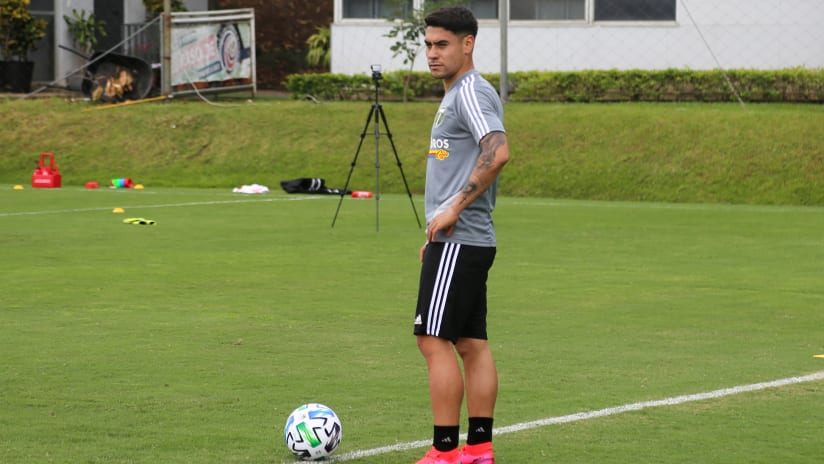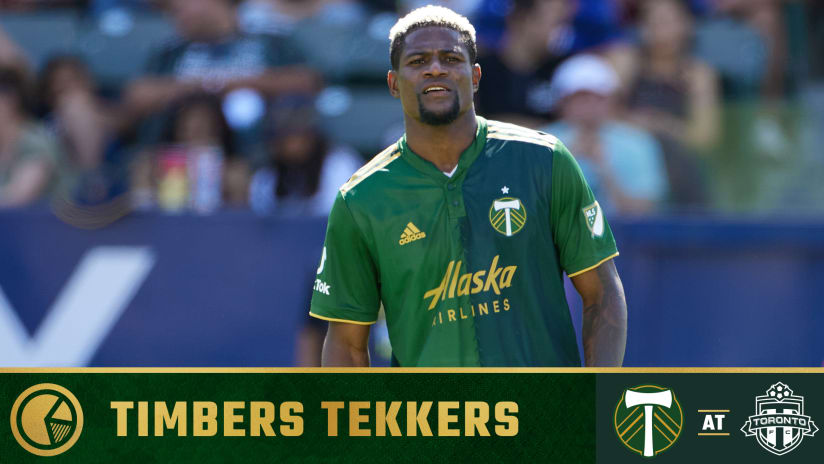SAN JOSÉ, Costa Rica – The main plot of today’s story can be seen in the player’s highlights, with Felipe Mora’s short-distance explosion, low center of gravity, and finishing ability portraying him as a penalty-box menace who can impact games without demanding huge time on the ball. The subtext to the Portland Timbers’ latest signing, though, goes back to late fall, when the team’s decision makers made their plans for the offseason known.
We’ve gone back to that point so many times before – the after-season press conference where Gavin Wilkinson, the team’s president of soccer, and Giovanni Savarese, its head coach provided a preliminary plan for the offseason. There was internal housekeeping to tend to, like making sure Steve Clark, Cristhian Parades and Diego Valeri all returned for another season, but as much attention was paid to the team’s two high-value, open, Designated Player spots. With one their opportunities to go beyond the salary cap, the team would target a wide player, with that target eventually becoming Yimmi Chara. The other spot? It would be a forward.
Yesterday’s news seemingly fulfilled that offseason vision, with Polish striker Jarek Niezgoda officially added to the team’s roster. Now, though, another rumored move has come to fruition. Today, Portland confirmed that Mora, a Chilean international, has been acquired on loan from Mexico’s UNAM Pumas – and his acquisition won’t require a Designated Player spot.
“Felipe is a player who our staff knows very well and was on the short list of DP forwards that we were scouting,” Wilkinson said in the club’s Friday announcement, “so being able to bring him in on loan for the year is beneficial to both Pumas UNAM and the Timbers. He is a proven goal scorer that gives Gio and the staff tactical flexibility and another quality attacking option.”
With any attacking player coming into Major League Soccer, there’s always a healthy debate about how his numbers will translate to a new league. It makes sense. There’s only so much soccer any of us can watch, so when we see lines of double-digit goals on a player’s record, it’s healthy to ask about context. What was the level of competition? Or the player’s role, within the team? Did the player convert an unsustainably high portion of their chances? Or, if they did, is there something special about the player that makes that rate sustainable? When it comes to Mora, Wilkinson’s obviously picked his side of the debate, having not only signed the player and committed some of the club’s Targeted Allocation Money to him but also described him as a proven goal scorer.
The record on that front, despite a lack of playing time this season at Pumas, seems indisputable. In his four seasons before this one – a span that dates back to 2015, and includes time with four different clubs – Mora has reached double-digit goals each season. Two of those campaigns were in Chile, with Audax Italiano then the nation’s premier club, Universidad de Chile; two were in Mexico, at Cruz Azul then Pumas.
On one hand, it’s worth considering why Mora has jumped around so much, but on the other hand is an explanation that makes perfect sense to anybody familiar with club soccer. Moving to La U was a step up, in Chile, one that earned Mora yet another step up, to the more affluent world of Mexico soccer. He then earned another move, from La Maquina to second of Mexico City’s big four. It’s only this tournament, when a new head coach, Michel, has favored Paraguayan attacker Carlos González Espínola in a one-striker approach, that Mora’s statline hit a bump.
As a result, Portland’s been able to buy low. Under other circumstances, acquiring a 26-year-old attacker who’d scored 53 goals in a four-year stretch would probably required a Designated Player spot, especially if that player had already enjoyed a high-value move to a league like Mexico’s. In this circumstance, though, Mora needs a better situation. He needs a coaching staff willing to take a fresh look. He needs to reestablish his value.
Even if those needs didn’t exist, though, Mora’s profile would have Savarese excited for his arrival.
“Mora is an excellent player,” the coach said, when asked to describe his team’s latest acquisition. “He is a player that has done very well everywhere he has gone. [He’s a] great person; a competitor; someone that can score goals.
“What we have is a different attacker. He’s very different than Jeremy [Ebobisse]. He’s very different than Niezgoda. For us, it’s a good acquisition to create more competition.”
Until they’re on the same field together, it’s hard to tell if those three will be different enough. Film suggests they will be, with each casting unique physical, stylistic, and positional profiles. But whether those styles mesh together is part of this gamble. Though Portland has at least one other need in the roster – depth at the right back position – they’ve chosen to put some of their financial flexibility toward depth up top. As with almost any move, there’s risk to the potential rewards.
Yet for a team that finished toward the middle of the league in goals last season – 11th out of 24 – the gamble seems justifiable. And in a world where depth has to help Portland make up ground on teams capable of paying for the Zlatan Ibrahimovics or Miguel Almiróns for the world – a world fueled by the type of Allocation Money that’s brought Mora to Portland – these are the moves the team will continue to make. Just as the team now runs deep at center back, midfielder, winger and even goalkeeper, once Jeff Attinella returns, so too, now, does the team have a logjam at forward.
Perhaps that wasn’t part of the plan last fall, but with one of the Timbers’ first options still available, Portland decided to pounce. Ultimately, Mora was too good to ignore.












